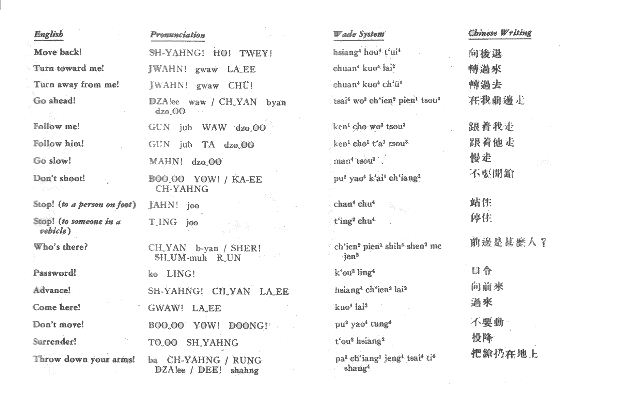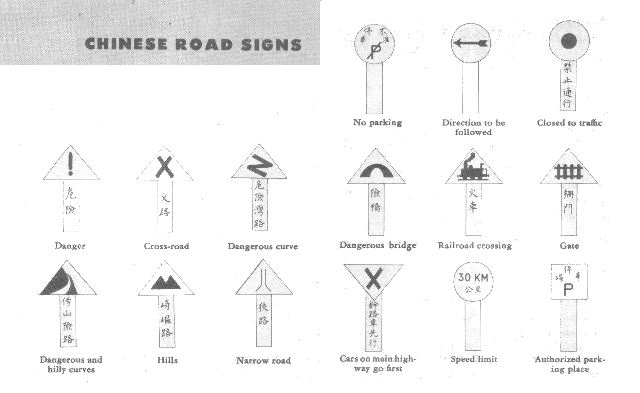

|
Dissemination of restricted matter - The information contained in restricted documents and the essential characteristics of restricted material may be given to any person known to be in the service of the United States and to persons of undoubted loyalty and discretion who are cooperating in Government work, but will not be communicated to the public or to the press except by authorized military public relations agencies. (See also par. 18b, AR380-5, 28 Sep 1942.) 
INTRODUCTION
Speaking Chinese is a little like singing. It is important to give the right tune to each expression.
In the Phrase Book the tones used in speaking Chinese are shown as follows:
The Table of Contents lists the situations covered. Try to become familiar with the contents of the Phrase Book so that you will know where to find a given section when you need it. In each section you will find a number of questions, each one so phrased that the Chinese speaker can give you a simple answer, point out the direction, give you a number, and so forth.
The Chinese never reply with just "yes" or "no" but make a short statement in answer to the question.
The answers you are most likely to get are given after each question. Frequently a Chinese will shake his
head for "no" or nod it for "yes," just as we do. If you want this kind of answer, you can get it by using
the following expression:
If the person you are speaking to knows how to read, you can point to the question in the column headed
Chinese and ask him to point to the answer:
The Chinese use "please" even more often than we do.
It is used as follows:
It is a good idea to memorize the numbers (at least up to ten) and the other expression you will constantly need.
The Chinese use their own system of writing numbers. If you do not understand a number when it is spoken,
you can show the person the list of Chinese numbers and ask him to point.
If you need a single word, look for it in the Alphabetical Word List at the back of the book. You will also find page numbers there telling you where to find expressions containing the word. To help with the pronunciation of Chinese, a set of phonograph records is issued with the Chinese Language Guide (Introductory Series). These records will help you get proper tones for the different expressions. 



|


Special thanks to Gary Goldblatt for providing the original booklet on which this page is based.
Copyright © 2004 Carl Warren Weidenburner
TOP OF PAGE ABOUT THIS PAGE CLOSE THIS WINDOW